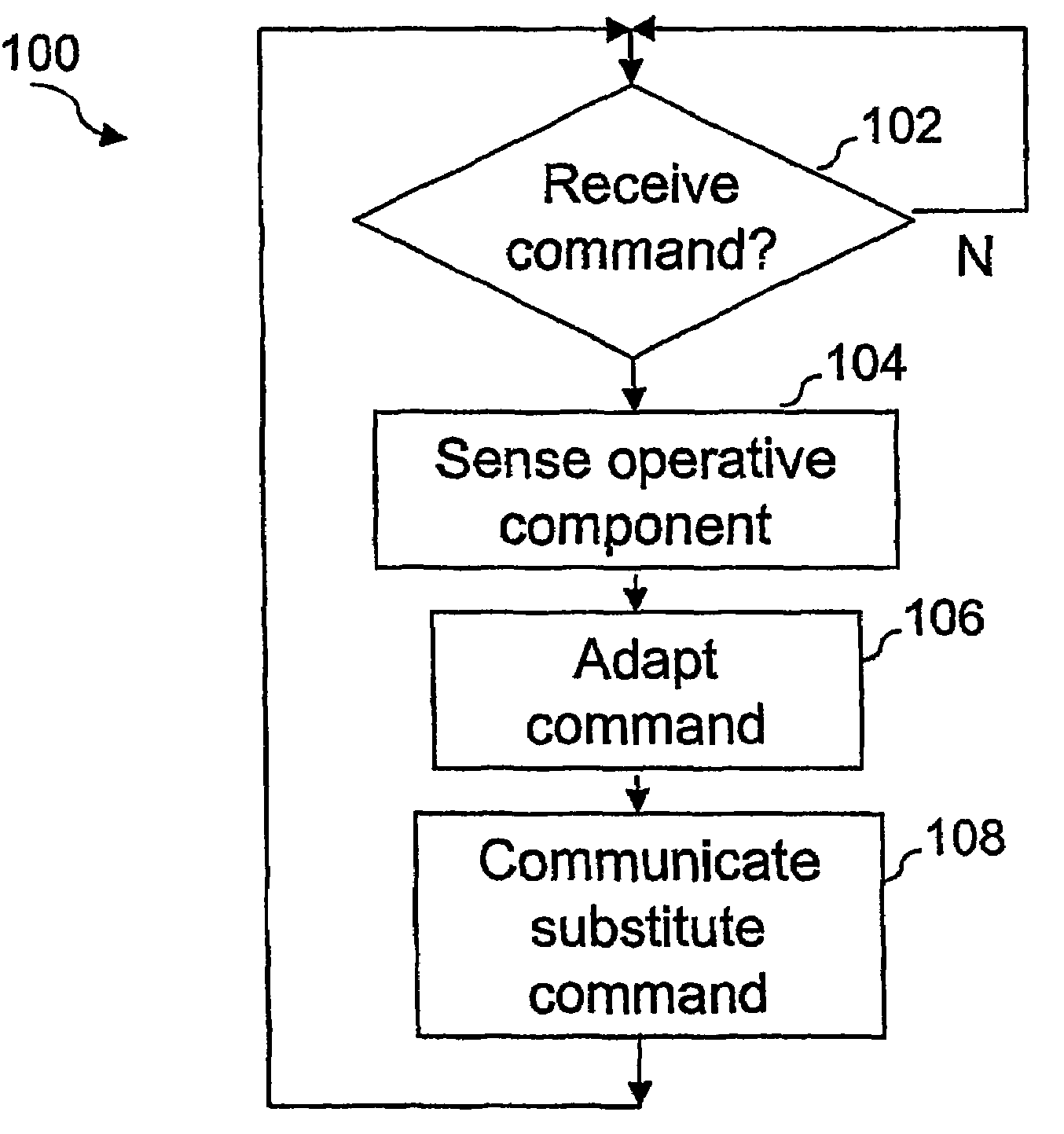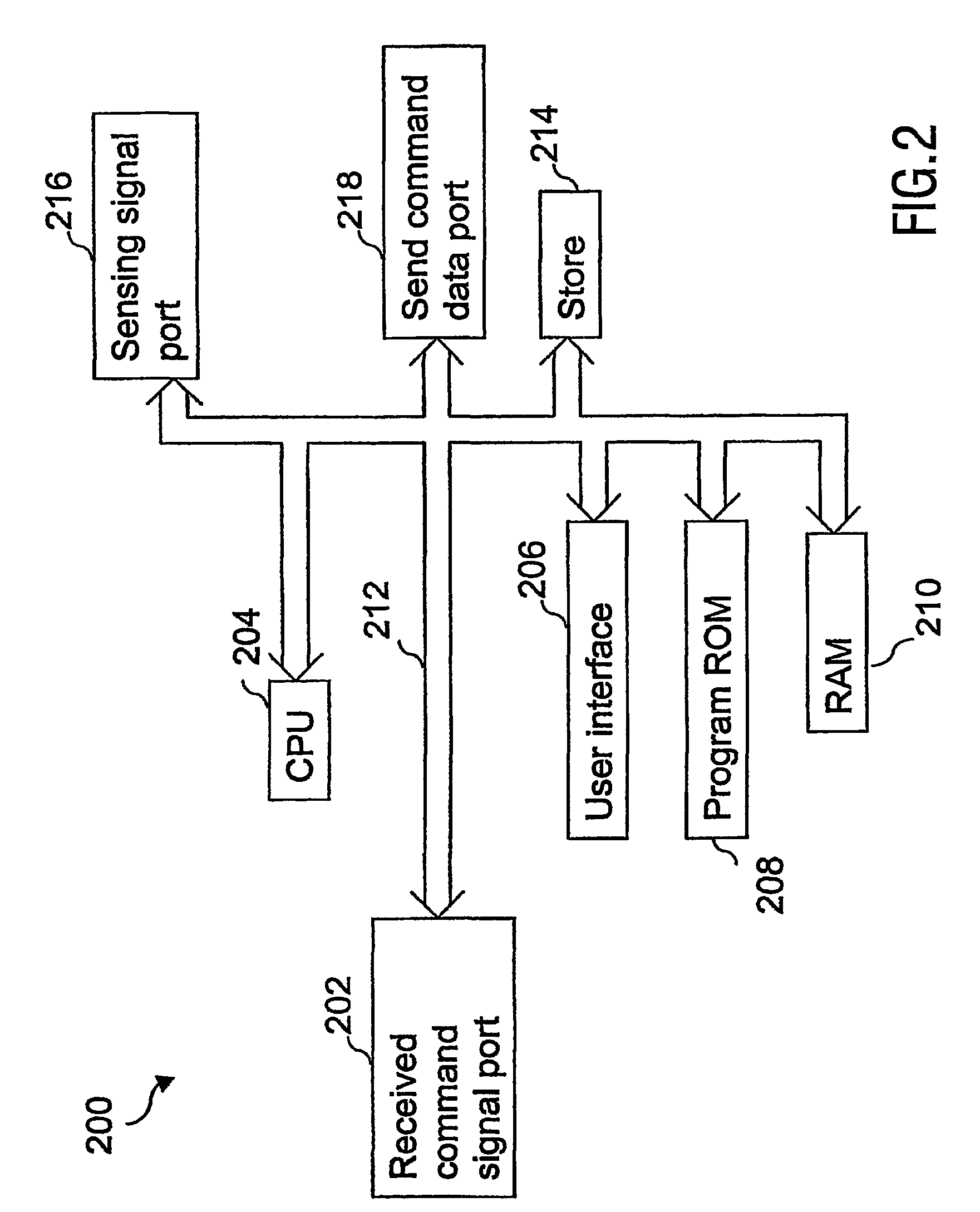Controlling a home electronics system
a home electronics and control technology, applied in the field of the control of a home electronics system, can solve the problems of user having to remember to change the (product) mode, the requirement to involve the user in initialization, and the inability to update the procedur
- Summary
- Abstract
- Description
- Claims
- Application Information
AI Technical Summary
Benefits of technology
Problems solved by technology
Method used
Image
Examples
Embodiment Construction
[0032]Within the following description of embodiments of the present invention, the term ‘home electronics system’ refers to any system comprising a collection of A / V components, including, but not limited to, TV, VCR, DVD player, recordable DVD, AV receiver and other components including, but not limited to, security system components (sensors, actuators, etc.), personal computers, PC peripherals, home appliances, information appliances and the like. The term ‘Project50’ refers to versions, as defined from time to time, of the IEC AV-Link specification for signaling using Pin10 of a Scart connection. At the time of filing of the present application, the DM1 specification is emerging. It is to be noted that all references herein to the term ‘Project50’ include the definition of ‘Project50’ as incorporated in the DM1 specification or any other subsequent formats, in addition to the aforementioned AV-Link specification. The term ‘operative component’ means a component within the home ...
PUM
 Login to View More
Login to View More Abstract
Description
Claims
Application Information
 Login to View More
Login to View More - R&D
- Intellectual Property
- Life Sciences
- Materials
- Tech Scout
- Unparalleled Data Quality
- Higher Quality Content
- 60% Fewer Hallucinations
Browse by: Latest US Patents, China's latest patents, Technical Efficacy Thesaurus, Application Domain, Technology Topic, Popular Technical Reports.
© 2025 PatSnap. All rights reserved.Legal|Privacy policy|Modern Slavery Act Transparency Statement|Sitemap|About US| Contact US: help@patsnap.com



